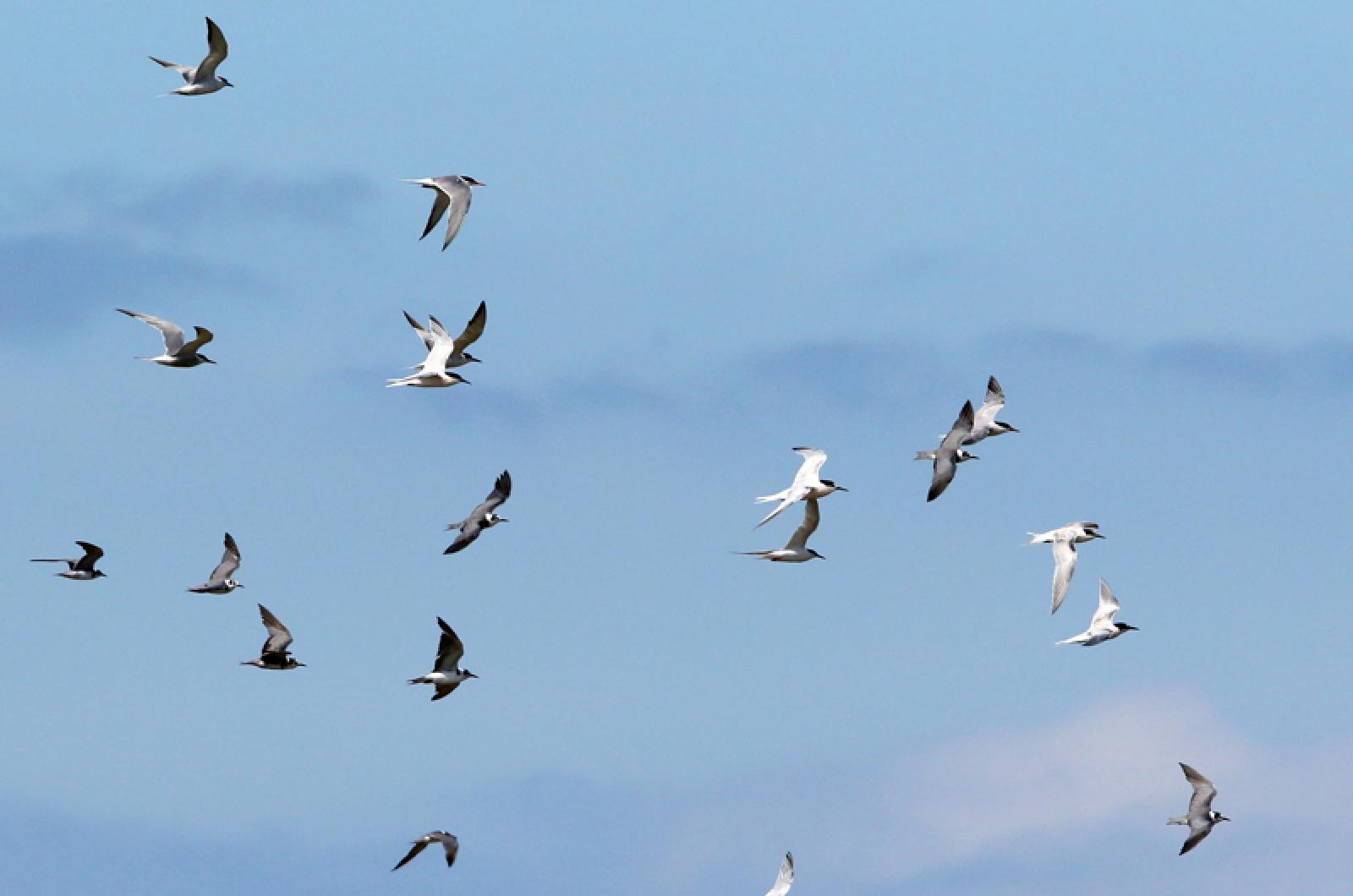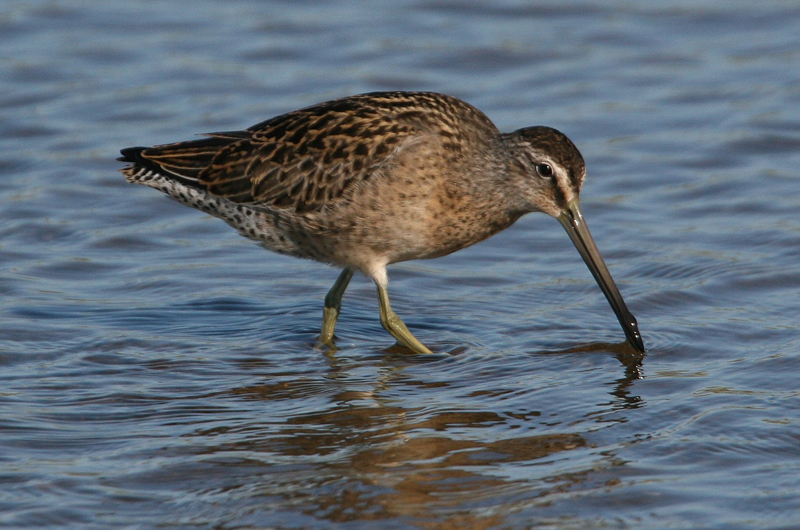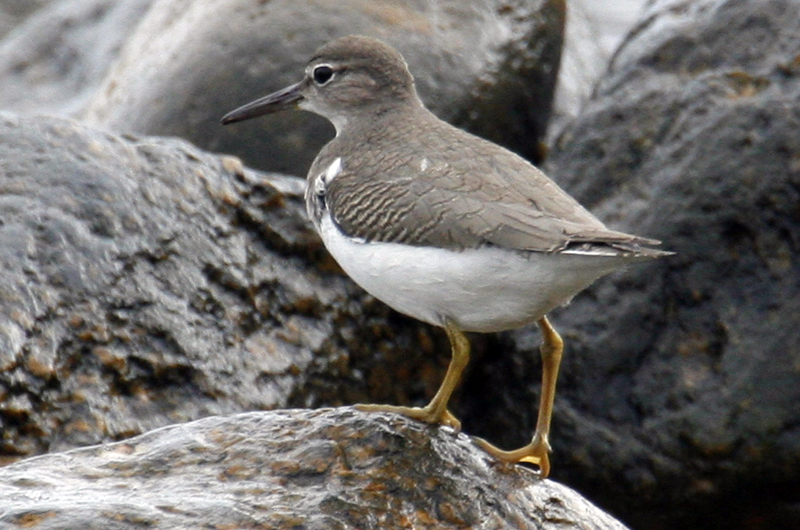It is July, and black terns are on the move. Some of them breed in Maine and Atlantic Canada, but most of them breed near the Great Lakes and points north and west. They are starting their southward migration now, en route to their wintering grounds in South and Central America.
The name of these small terns is appropriate for their breeding plumage, which is mostly black. But the name is less functional for the juveniles and the adult winter plumage, as both of these plumages are mostly gray and white.
Susan Whiting and Jeff Bernier report the first black terns of the season on July 15. Susan Whiting found an adult along the shores of Chilmark Pond, and Jeff Bernier spotted a one-year-old black tern on Norton Point. On July 16, Warren Woessner spotted an adult black tern on Norton Point.
The best way to find this species is to look over the large flocks of common, roseate and least terns that are aggregating on the shorelines of our coastal ponds. They are the size of least terns but are much darker. They are most conspicuous with good lighting, when the sun is mostly behind you.
Bird Sightings
Shorebirds dominate the rest of the bird news.
Along with the black tern mentioned above, on July 15 at Chilmark Pond Susan Whiting found a great blue heron, two great egrets, a green heron, 4 American oystercatchers, 5 piping plovers, 13 sanderlings, 6 least sandpipers, 2 semipalmated sandpipers, 3 short-billed dowitchers, 1 spotted sandpiper, a laughing gull, 100 least terns, 2 roseate terns, 30 common terns, and, last but not least, 4 northern harriers.
Warren Woessner visited the marshes at the southern end of Sengekontacket Pond on July 13 and found a lesser yellowlegs and a snowy egret. He went to Norton Point on July 17, and saw many of the species observed by Susan Whiting plus a few more: 50 short-billed dowitchers, willets, black-bellied plover, semipalmated plover, red knot, white-rumped sandpipers, pectoral sandpiper, and greater yellowlegs. Jenny Cloudman and I found over 100 short-billed dowitchers concentrated at the western end of Norton Point on July 13. We also got unusually good looks at the normaly secretive salt marsh sparrow. Steve Allen also found a saltmarsh sparrow at Felix Neck on July 16.
Spotted sandpipers have also arrived. They are mostly in near-breeding plumage, as in they still have spots on their chest and belly. In addition to Susan’s spotting, I observed one at Cedar Tree Neck on July 16 and 17, and Steve Allen found one at Felix Neck. Why this species does not breed here is a mystery — a pair nested on Nantucket this year.
Juvenile shorebirds, hatched in June, are still up in the Arctic and will not show up for a few weeks. But that does not mean that the adult shorebirds we are finding now are easy to identify. My guided birding tour on July 15 observed a variety of adult plumages, especially of the short-billed dowitchers. A few were still in fairly sharp breeding plumage and some already in more-or-less winter plumage. Most are mostly in between these two extremes. We also observed black-crowned night-heron, green heron and great egret.
The breeding season is winding down and south-bound migrants are now arriving. Please keep us up-to-date by reporting your sightings to birds@mvgazette.com.
Robert Culbert leads Saturday morning Guided Birding Tours and is an ecological consultant living in Vineyard Haven.










Comments
Comment policy »